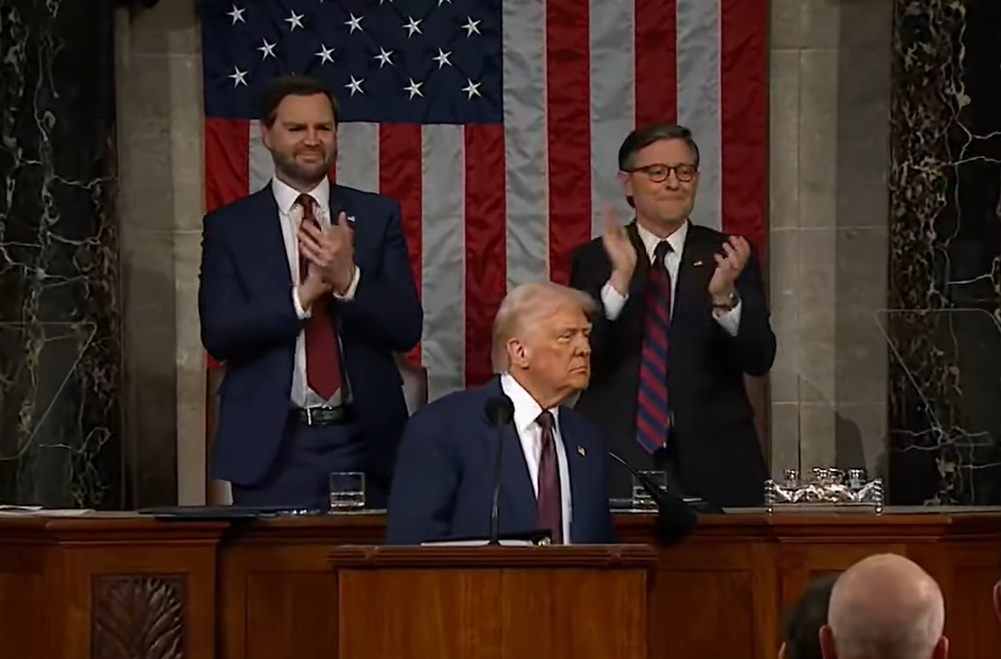On March 4, 2025, President Donald Trump delivered his much-anticipated address to a joint session of Congress. This speech marked Trump’s return to the Capitol as president after his re-election, and it set the tone for what his administration intends to accomplish in the coming months. The address, lasting approximately one hour and forty minutes, blended triumphal declarations, ambitious promises, and combative rhetoric, capturing global attention.
The speech began with President Trump proclaiming the start of what he called the “Golden Age of America.” From the outset, Trump emphasized that his administration had achieved significant progress during its first 43 days in office. He credited himself with securing the border, lowering energy prices, restoring economic strength, and reversing what he described as “radical policies” introduced by the previous administration.
One of the central themes of Trump’s remarks was immigration. The president claimed that illegal crossings at the southern border had dropped significantly since his return to office. According to Trump, his aggressive border security policies were already delivering results. In addition to border security, Trump highlighted what he called his administration’s efforts to restore “American culture and values.” This included banning transgender athletes from women’s sports, removing critical race theory from educational institutions, and cutting what he described as unnecessary government programs.
On the economic front, Trump spoke of inflation, energy independence, and job creation. He announced a national energy emergency, promising to prioritize domestic oil, gas, and coal production. Trump argued that under his leadership, energy prices would continue to fall, easing the burden on American households. The president also promised further tax cuts and proposed new tariffs on imports from China, Mexico, and Canada, asserting that these measures would protect American industries and workers.
Foreign policy featured prominently in the address. Trump touched on the ongoing war in Ukraine, a conflict that has dominated global headlines for years. Trump stated that his administration was prepared to negotiate a peace settlement, contingent on Ukraine granting American companies mineral rights in exchange for continued U.S. security assistance. Trump’s stance on Ukraine drew both applause and condemnation, illustrating the deep divisions within Congress and the public at large.
In addition to Ukraine, Trump proposed bold geopolitical initiatives. He called for the United States to reclaim control over the Panama Canal, describing it as a strategic asset vital to national security. Trump also reiterated his long-standing interest in purchasing Greenland from Denmark, saying that its acquisition would strengthen American military and economic dominance in the Arctic.
Throughout the speech, Trump’s confrontational style remained evident. He mocked environmentalists for pushing electric vehicles, referred to Democratic Senator Elizabeth Warren as “Pocahontas,” and denounced liberal policies on climate change, diversity, and gender identity. Democratic lawmakers frequently jeered during his remarks, with some members walking out in protest. At one point, Democratic Representative Al Green interrupted the speech and was removed from the chamber after refusing to yield the floor.
Following Trump’s address, Michigan Senator Elissa Slotkin delivered the official Democratic rebuttal. Slotkin sharply criticized Trump’s policies, warning that his economic plans would favor the wealthy at the expense of working families. She also accused Trump of politicizing national security and using his platform to sow division instead of uniting the country.
Despite the controversy, Trump’s address achieved its primary goal—seizing the political spotlight. His supporters praised the speech as a bold and unapologetic articulation of conservative priorities, while his critics denounced it as divisive and extreme.
The speech also reflected Trump’s larger strategy heading into the next phase of his presidency. By doubling down on culture war issues, emphasizing economic nationalism, and promoting an aggressive foreign policy agenda, Trump signaled that his administration will pursue an agenda designed to energize his base while challenging opponents at every turn.
Ultimately, Donald Trump’s address to Congress was more than a policy speech. It was a declaration of intent, a preview of how his administration plans to govern, and a reminder that Trump remains one of the most polarizing and influential figures in American political history.
As the nation digests the implications of Trump’s remarks, the political landscape for 2025 and beyond is taking shape. Whether his vision of a “Golden Age of America” becomes reality or remains a rhetorical flourish will depend not only on Trump’s ability to deliver but also on the fierce resistance his agenda will encounter from political opponents, the media, and international allies.





